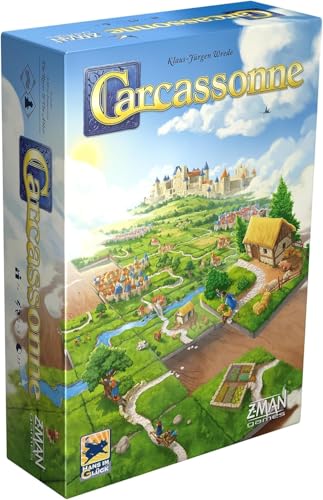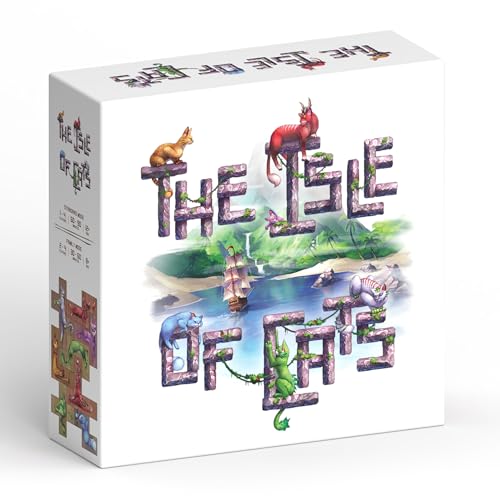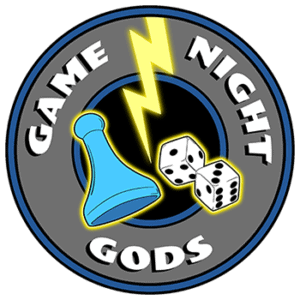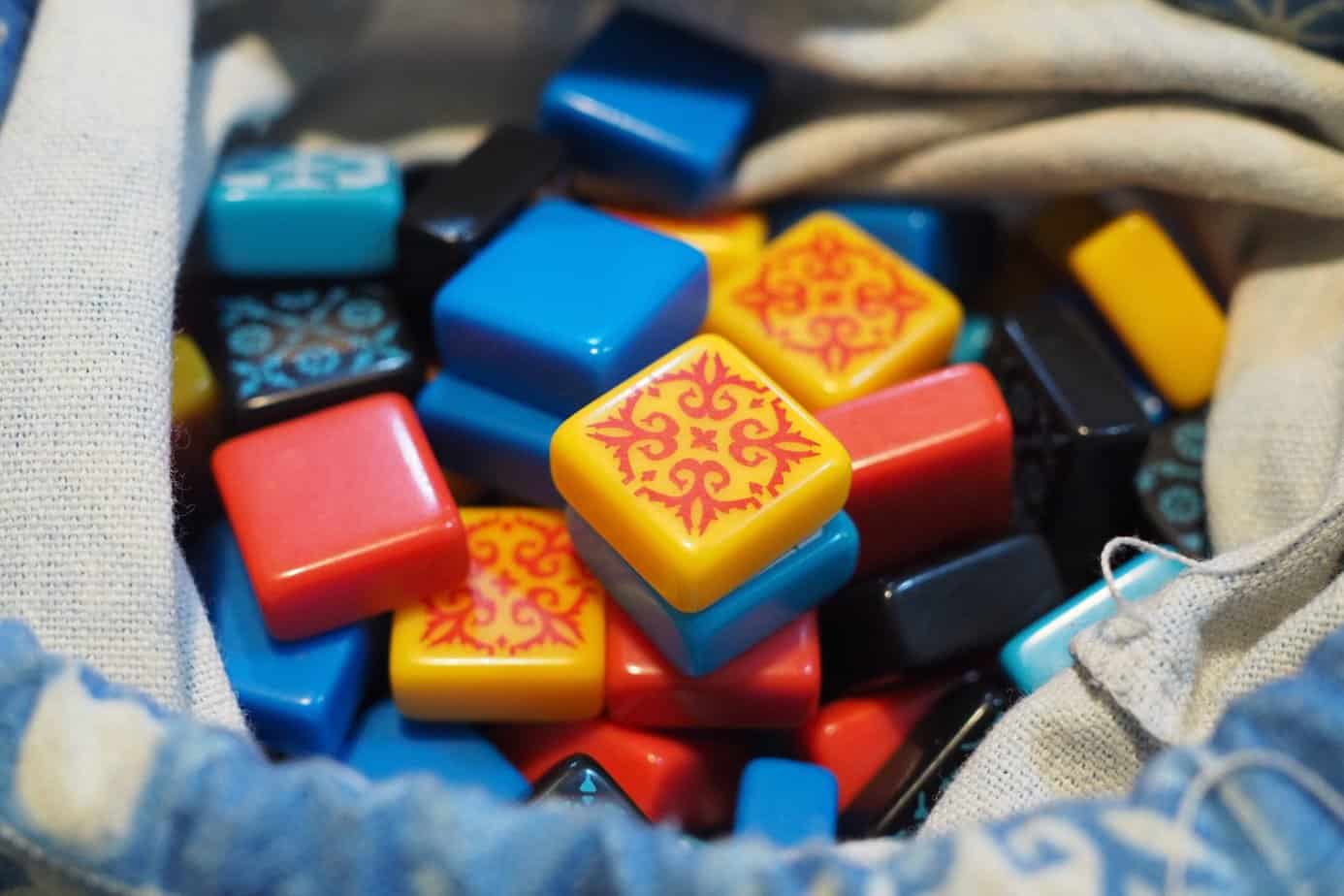Over the years, board games have undergone a tremendous transformation from the traditional style of roll-and-move games to more complex and strategic games that require careful planning, placement of pieces, and analysis of probabilities. Board games with tiles, also called tile placement games, are among the most popular genres in board games that have emerged in recent years.
Tile placement games involve players strategically placing tiles to gain points and control the game board. These games require players to think ahead, plan their moves, and consider their opponents’ strategies to come out on top. This genre has become increasingly popular in the board game community due to the combination of strategy, skill, and a bit of luck that makes each game unique and engaging.
What are Tile Placement Games?
Tile placement games are a popular sub-genre of different types of board games that involve players placing tiles on a game board in a strategic way to achieve objectives and gain points. Players place tiles with various images, symbols, or numbers in these games onto the board to create a larger playing surface.
The placement of tiles is critical as it can influence the game’s outcome, determining who gains control of specific areas of the board, earns points, or completes objectives. The game mechanics of tile placement games vary from one title to another. Still, the strategy always plays a significant role.
In these games, players often must consider multiple factors, such as the location of other players’ tiles, the order in which tiles are placed, the strategic value of particular tiles, and more. A player’s success in these games depends on their ability to anticipate their opponent’s moves, adapt to changing game conditions, and identify the most practical moves.
Overall, tile placement games are an exciting sub-genre of board games that offer unique gameplay, challenging strategy, and endless replay-ability. The following section will highlight some of the best tile placement games that have recently become fan favorites.
Best Tile Placement Games
This article will showcase the top 12 board games with tiles that offer the best gameplay and challenge players’ strategic thinking skills. From classic games like Carcassonne to newer titles like Cascadia, we will explore what makes each game unique and why they are considered tile placement games and are even showcased on our list of best game night games.
Whether you are a seasoned board gamer or just starting a hobby, these games will provide hours of entertainment and fun. So, let’s dive into the world of tile placement games and discover the best games in this genre!
1. Azul

Azul is a tile-placement game designed by Michael Kiesling and published by Next Move Games. It is a game of approximately 30 to 45 minutes for two to four players. The game is set in Portugal and is based on the art of ceramic tile decoration known as azulejos.
In Azul, players take turns drafting tiles from a central pool and placing them on their player boards. The game aims to earn points by strategically placing tiles to create specific patterns and complete sets. The game consists of five rounds, and the player with the most points at the end of the final round wins. At the end of each round, players score points based on the tiles they have placed and the patterns they have created.
Azul’s drafting mechanism makes it unique, where players must take tiles from a shared pool and decide which color and number of tiles to take. Players must also choose how many tiles to take, as each tile represents a penalty point. The remaining tiles in the collection are moved to a central area, representing the discarded tiles.
Azul has won multiple awards, including the prestigious Spiel des Jahres award in 2018. It has become a fan favorite due to its simple yet engaging gameplay, beautiful design, and strategic depth. The game’s expansion, Azul: Stained Glass of Sintra, adds additional gameplay elements and challenges, making it an excellent choice for players looking for a more profound experience. Overall, Azul is a fantastic tile placement game that offers accessibilities for new players and depth for experienced gamers.
2. Patchwork

Patchwork is a two-player tile placement game designed by Uwe Rosenberg and published by Mayfair Games. The game’s theme is centered around creating a patchwork quilt and has a playing time of approximately 30 minutes.
In Patchwork, players take turns selecting and placing various shaped tiles on their player boards. The game aims to create a patchwork quilt by strategically placing tiles to fill the board while managing resources, time, and money. Each player starts with a 9×9 board and five buttons representing the game’s currency. The game ends when both players’ boards are filled, and the player with the most buttons at the end of the game wins.
What makes Patchwork unique is its resource management and time mechanics. Each tile requires players to spend buttons to acquire and place it on their board. Additionally, each tile has a specific time cost determining when a player can take their next turn. This creates a strategic element of managing resources and time while maximizing each move’s value.
Patchwork has won multiple awards, including the International Gamers Award and the Golden Geek Award for Best Two-Player Game. It has become a fan favorite due to its elegant gameplay, beautiful artwork, and challenging strategy. The game’s expansion, Patchwork Express, offers a simplified version of the game, making it more accessible for new players. Overall, Patchwork is an excellent tile placement game for two players, providing depth and replayability.
3. Cascadia

Cascadia is a tile-placement game designed by Randy Flynn and published by Flatout Games. The game is approximately 30 to 45 minutes and can be played by one to four players.
In Cascadia, players take turns selecting and placing various shaped tiles on the game board to create habitats for wildlife. The game aims to make the most diverse and connected habitats while scoring points for completing objectives. Each player starts with unique habitat tiles and two goal cards. The game ends when all tiles have been placed, and the player with the most points wins.
What makes Cascadia unique is its gameplay mechanics, which require players to think strategically about the placement of tiles to maximize their score. Players must consider the placement of tiles relative to other tiles and how it impacts the completion of objectives. The game also features a variety of habitats and animal tokens, each with different point values and abilities, providing players with multiple avenues to score points.
Cascadia has become a fan favorite due to its beautiful artwork, engaging gameplay, and strategic depth. It offers a unique take on the tile placement genre by incorporating an ecological theme and an emphasis on diversity and connection. Cascadia is an excellent choice for players looking for a challenging and rewarding tile placement game.
4. Hive

Hive is a two-player abstract tile placement game designed by John Yianni and published by Gen42 Games. The game is approximately 20 to 30 minutes and can be played on any flat surface.
In Hive, players take turns placing and moving hexagonal tiles on the game board to surround the opponent’s queen bee. The game aims to surround the opponent’s queen bee while protecting one’s queen bee. Each player starts with unique tiles, including the queen bee, beetle, grasshopper, ant, and spider, each with its own movement rules.
What makes Hive unique is its simplicity and strategic depth. Unlike traditional board games, Hive has no board and no setup time, making it perfect for players on the go. Each tile can move in a specific way. Players must use their tiles’ abilities to outmaneuver their opponent and protect their queen bee.
Hive has become a fan favorite due to its beautiful artwork, intuitive gameplay, and strategic depth. It offers a unique take on the tile placement genre by incorporating simple yet challenging gameplay mechanics. The game has won multiple awards, including the Mensa Select Award and the Golden Geek Award for Best Abstract Game. Overall, Hive is an excellent choice for players looking for a quick and engaging two-player tile placement game.
5. Kingdomino

Kingdomino is a tile-placement game designed by Bruno Cathala and published by Blue Orange Games. The game is approximately 15 to 20 minutes and can be played by two to four players.
In Kingdomino, players take turns selecting and placing domino-like tiles on the game board to create a 5×5 kingdom. Each tile depicts two terrain types, and players score points based on the size of each terrain type and the number of crowns on the tiles. The game ends when all tiles have been placed, and the player with the most points wins.
What makes Kingdomino unique is its elegant gameplay mechanics and quick playing time. The game is easy to learn yet provides enough strategic depth to keep players engaged. The game also features various terrain types, providing players multiple avenues to score points.
Kingdomino has become a fan favorite due to its beautiful artwork, engaging gameplay, and strategic depth. It offers a unique take on the tile placement genre by incorporating a kingdom-building theme and simple yet challenging gameplay mechanics. The game has won multiple awards, including the Spiel des Jahres and the Origins Award for Best Family Game. Overall, Kingdomino is an excellent choice for players looking for a quick and engaging tile placement game that is easy to learn yet challenging to master.
6. Carcassonne

Carcassonne is a tile-placement game designed by Klaus-Jürgen Wrede and published by Hans im Glück. The game is approximately 30 to 45 minutes and can be played by two to five players.
In Carcassonne, players draw and place square tiles on the game board to build roads, cities, and fields. The game also features meeple tokens, which players can place on completed features to score points. The objective of the game is to score the most points by the end of the game.
What makes Carcassonne unique is its simple yet strategic gameplay mechanics. Players must carefully plan their tile placements to maximize their scoring opportunities while blocking opponents. The game also features a modular board, allowing endless replayability and strategic depth.
Carcassonne has become a classic game in the board gaming community, spawning numerous expansions and spin-offs. It offers a unique take on the tile placement genre by incorporating a medieval theme and various features to build. The game has won multiple awards, including the Spiel des Jahres and the Origins Award for Best Board Game. Overall, Carcassonne is an excellent choice for players looking for a classic tile placement game that is easy to learn yet challenging to master.
7. Bananagrams

Bananagrams is a fast-paced tile placement game designed by Rena Nathanson and published by Bananagrams Inc. The game is approximately 5 to 15 minutes and can be played by two to eight players.
In Bananagrams, players draw letter tiles and race to create a grid of intersecting words. The game has no board or points system, and the objective is to be the first player to use all their tiles. The game also features multiple play modes, including solo and team variants.
What makes Bananagrams unique is its fast-paced gameplay and emphasis on word building. The game is easy to learn and provides a fun and engaging experience for players of all ages. The game’s portable design and quick playing time make it an excellent choice for travel or on-the-go gaming.
Bananagrams has become a popular game in the word game genre and has won multiple awards, including the Toy of the Year Award and the Parent’s Choice Gold Award. It offers a unique take on the tile placement genre by incorporating word-building and fast-paced gameplay. Overall, Bananagrams is an excellent choice for players looking for a fun and engaging word game that can be played anywhere.
8. Rummikub

Rummikub is a classic tile placement game designed by Ephraim Hertzano and published by Lemada Light Industries. The game is approximately 30 to 60 minutes and can be played by two to four players.
In Rummikub, players draw and place numbered tiles in sets and run on the game board. The game aims to be the first player to use all their tiles. The game also features joker tiles, which can be used as wildcards to substitute for any other tile.
What makes Rummikub unique is its simple yet strategic gameplay mechanics. Players must carefully plan their tile placements to maximize their scoring opportunities while blocking opponents. The game also features a modular board, allowing endless replayability and strategic depth.
Rummikub has become a classic game in the tile placement genre and has won multiple awards, including the Spiel des Jahres and the Origins Award for Best Board Game. It offers a unique take on the tile placement genre by incorporating numbered tiles and runs. Overall, Rummikub is an excellent choice for players looking for a classic tile placement game that is easy to learn yet challenging to master.
9. Qwirkle

Qwirkle is a popular tile placement game designed by Susan McKinley Ross and published by MindWare. The game is approximately 30 to 60 minutes and can be played by two to four players.
In Qwirkle, players draw and place tiles of different shapes and colors on the game board. The game’s objective is to create lines of tiles that share the same color or shape. The game also features bonus points for creating lines of six tiles, known as Qwirkles.
What makes Qwirkle unique is its emphasis on pattern recognition and strategic placement. Players must carefully plan their tile placements to maximize their scoring opportunities while blocking opponents. The game also features multiple ways to play, including a solo variant and a travel-sized edition.
Qwirkle has become a popular game in the tile placement genre and has won multiple awards, including the Spiel des Jahres and the Mensa Select Award. It offers a unique take on the tile placement genre by incorporating shapes and colors. Overall, Qwirkle is an excellent choice for players looking for a fun and engaging tile placement game that provides strategic depth and replayability.
10. Tsuro

Tsuro is a beautifully designed tile placement game developed by Tom McMurchie and published by Calliope Games. The game is approximately 15 to 30 minutes and can be played by two to eight players.
In Tsuro, players place tiles representing paths on the game board, guiding their stones along them. The game aims to avoid running off or colliding with other stones while guiding your stone to the last tile remaining on the board.
Tsuro’s emphasis on simple gameplay mechanics and gorgeous visuals makes it unique. The game is easy to learn, making it accessible to players of all ages and skill levels. It also features a modular board, allowing endless replayability and strategic depth.
Tsuro has become a popular game in the tile placement genre and has won multiple awards, including the Mensa Select Award and the Golden Geek Award for Best Family Game. It offers a unique take on the tile placement genre by incorporating pathfinding and player interaction. Overall, TSURO is an excellent choice for players looking for a visually stunning tile placement game that is easy to learn yet challenging to master.
11. My City

My City is a tile-placement game designed by Reiner Knizia and published by Thames & Kosmos. The game is approximately 30 minutes and can be played by two to four players.
In My City, players build their city by placing tiles representing buildings and landmarks on their game boards. Each player starts with the same board and a set of identical tiles. Still, players must adapt their strategies as the game progresses to create a unique and thriving city.
What makes My City unique is its campaign-style gameplay, with each game representing a new chapter in the city’s development. The game also features a legacy-style element, with stickers that permanently alter the game board and tiles throughout multiple playthroughs.
My City has become a popular game in the tile placement genre and has won multiple awards, including the Spiel des Jahres Recommended seal and the Golden Geek Award for Best Family Game. It offers a unique take on the tile placement genre by incorporating campaign-style gameplay and legacy-style elements. Overall, MY CITY is an excellent choice for players looking for a more narrative-driven tile placement game that provides strategic depth and replayability.
12. The Isle of Cats

The Isle of Cats is a tile-placement game designed by Frank West and published by City of Games. The game is approximately 60-90 minutes and can be played by one to four players.
In The Isle of Cats, players rescue cats from a mysterious island before it sinks into the ocean. Players must collect cats and place them on their game boards while navigating various hazards and obstacles.
What makes The Isle of Cats unique is its combination of tile placement and card drafting mechanics. Players must strategically collect cat tiles and treasure cards while carefully managing their resources to maximize their score.
The game also features gorgeous artwork and unique cat-shaped player boards, adding to its charm and visual appeal. With multiple modes of play and variable scoring conditions, The Isle of Cats offers endless replayability and strategic depth.
The Isle of Cats has quickly become a fan favorite in the tile placement genre, winning multiple awards, including the UK Games Expo Award for Best Euro Game and the Golden Geek Award for Best Family Game. It offers a unique and engaging gameplay experience for players of all ages and skill levels, making it an excellent choice for anyone looking for a fun and visually stunning tile placement game.
Board Games with Tiles Conclusion
Tile placement games have become popular in the board game industry, offering players a unique and engaging gameplay experience. Whether you are a seasoned gamer or just starting, there is a tile-placement game out there that will captivate you.
In this article, we have explored some of the best tile placement games on the market, including Azul, Patchwork, Cascadia, Hive, Indigo, Kingdomino, Carcassonne, Bananagrams, Rummikub, Qwirkle, Tsuro, My City, The Isle of Cats. Each game offers a unique twist on the tile placement mechanic, providing players with endless strategic fun.
From the stunning artwork of Azul to the charming cat-shaped player boards of The Isle of Cats, these games will surely delight players of all ages and skill levels. Whether you are looking for quick and easy fun or a more complex and strategic experience, there is a tile-placement game.
Overall, tile placement games are a fantastic way to spend an evening with friends or family. They offer a perfect balance of strategy and luck, providing players a challenging and engaging experience. So next time you are looking for a new board game, consider a tile placement game – you won’t be disappointed!

